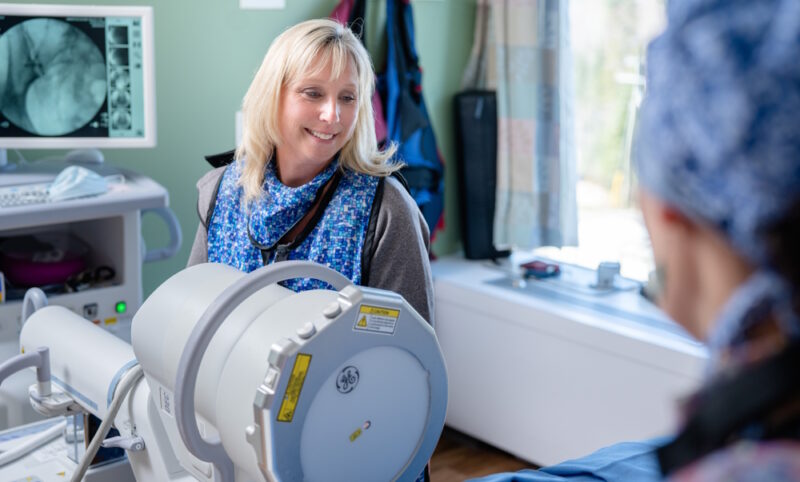Imaging Services

Imaging Services
Complete diagnostic imaging services.Imaging Services
Each imaging method has its own discrete uses and your medical provider will be the one to determine which test(s) will be most appropriate for your particular circumstance. At UCVH, we provide complete diagnostic imaging services, including:
X-RAYS
The images achieved via x-ray are done so by the brief transmission of electromagnetic waves (radiation) through a specific area of your body and onto photographic film. Bones, tumors, and other dense matter appear white. Less dense areas of the body – such as soft tissues and/or breaks within a bone – allow the radiation to pass through, which is why these areas appear darker on the x-ray film. X-rays are a great initial diagnostic tool; however, they may not provide as much detail as newer, more powerful methods such as CT and MRI.
CT SCAN (COMPUTED TOMOGRAPHY)
A CT scan is a relatively modern imaging tool that combines X-rays with computer technology to produce more detailed, cross-sectional images of your body. A CT scan allows your medical team to see the size, shape, and position of the structures that are deep inside your body, such as organs, tissues, or tumors. This type of imaging can be used to view structures such as your brain and spinal cord, as well as organs within your chest, abdomen, and pelvis, or for providing more detailed images for small, bony structures.
MRI (MAGNETIC RESONANCE IMAGING)
MRI’s are another modern imaging technique produce high quality, detailed cross-sectional images of your body. Unlike CT scans and x-rays, MRI’s do not use radiation. Instead, an MRI tool uses magnetic fields – as well as a sophisticated computer – to take high-resolution pictures of your bones and soft tissues. Because high-powered magnets are used, it’s extremely important to inform your doctor of any implants such as a pacemaker, metal clips, or other metal objects in your body before you undergo an MRI scan. MRI’s are a very helpful tool in diagnosing injury to cartilage, herniated disks, torn ligaments (like those in your knee), tears in the rotator cuff, hip and pelvic problems, detection of strokes, as well as a multitude of other issues.
Mammography
Mammography uses low dose radiation to produce 2D and 3D images with our Siemens Mammomat Inspiration machine. UCVH performs both screening and diagnostic mammography exams. With the help of iCad AI technology, patients receive state of the art breast imaging.
Ultra Sound
Ultrasound is a diagnostic procedure that uses sound waves, not radiation, to produce an image. UCVH utilizes a GE Logiq ultrasound system for the following exams:
- OB – all trimesters including High-Risk OB and anatomic fetal surveys
- GYN – Internal and External
- General – Abdomen
- Thyroid
- Kidneys/Bladder
- Scrotum
- Hernia – inguinal
- Foreign Body
- Vascular – Leg/Arm veins and arteries
- Carotid Arteries
- Biospies – Breast
- Prostate
- Echocardiogram (ultrasound of the heart)
Bone Densitometry
Bone density exams are very quick and simple. With the use of low dose radiation, lower back and hip images are obtained to help detect osteoporosis and osteopenia.
Hours of operation:
Monday – Friday 7am-6pm, and Saturday & Sunday 8am-4:30pm
For more information, call (603) 388-4231.
